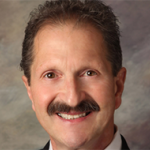Remember when plate spinning was a popular TV act – perhaps most notably on The Ed Sullivan Show? You would watch the performer rapidly spin a plate or two on tall poles and wonder how he would ever keep those two plates going. And then he would add even more plates to more poles. Before you knew it, he had a table full of plates rapidly spinning on poles, and you were amazed at the balancing act that was unfolding on stage.
Well, I have to admit, as CIO for a billion-dollar electrical contractor, everyday my job feels like that - a constant balancing act. I'm sure many CIOs, regardless of company size or industry, feel the same.
In the last five years, technology in construction has absolutely exploded. When I joined Rosendin Electric, we were still running point-to-point network solutions. Our executives were still getting on planes to meet in real life instead of jumping onto a quick video conference. Our use of technology was just as primitive as that late-night show plate spinning act now seems in the entertainment industry.
A lot has changed since then. Since I joined, our company has nearly doubled in revenue. We went from being rather West Coast-centric to being worldwide, through the opening of regional offices and acquisition. And when it comes to technology, we've moved our entire company from caveman years to modern technologies in a very condensed timeframe. We've adopted a cloud strategy, updated and/or swapped out our existing infrastructure, including our ERP, our CRM, even our Internet.
And that's not all. We've transitioned from a conventional 2D environment to a 3D building information model (BIM) and computer-aided design (CAD) system that has allowed us to leverage a holistic 3D model for clash detection, prefabrication, and facilities management. That transition included spinning plates topped with talent, software, and hardware challenges. In the future, we could create accurate, automated cost estimates for our projects by linking our cost estimating system to our BIM software.
Then there's mobility, which has exploded seemingly overnight in the construction industry. When we first took a look at ways mobile tools could help us on construction sites, we were having to engage with a lot of tier-two vendors because most bigger companies didn't think there was a huge mobility market in construction – they weren't dedicating a lot of time, energy, and attention toward marketing to our sector.
These days, mobility is integral to our business, and the big companies have taken notice. Not only are they investing more time and energy in the construction space, they're also acquiring many of these tier-two players that we were using to provide mobility services, and that creates challenges for us. When a company is acquired, they go through about a 12-month phase wondering, “What’s going to happen to us? Am I going to lose my job? How are we going to get assimilated into the new business?” That disrupts the products and services that we had been using for mobility in construction. Sometimes they’re great transitions, and sometimes they start changing or eliminating the products, or morphing them into different product lines. That leads to even more plate spinning for me and my entire IT organization.
And now, in addition to that, I'm throwing up more plates to spin because of all the brilliant data we've been collecting. Now the business is asking us, “Where is our business analytics? Where is our BI platform?” They want to tap the data IT has been gathering so that when we get our next hospital contract, for example, they can identify how many hospitals we have built over the last ten years for a particular general contractor, what was our revenue, how did we do, what do we need to do better, etc. We've collected a lot of good intelligence that we're trying to push out to the business in addition to all of these other things that I’m trying to work on.
Doing all of that has created extraordinary challenges, not just for me, but for all CIOs in the construction sector. The opportunities technology has opened up for us have been interesting and significant. But unlike the plate-spinning performer on the Ed Sullivan Show, I'm not doing it for an applause at the end. I'm committed to finding creative ways to use technology to help our business continue to grow. It's a balancing act, for sure, but it's one that I so enjoy.






